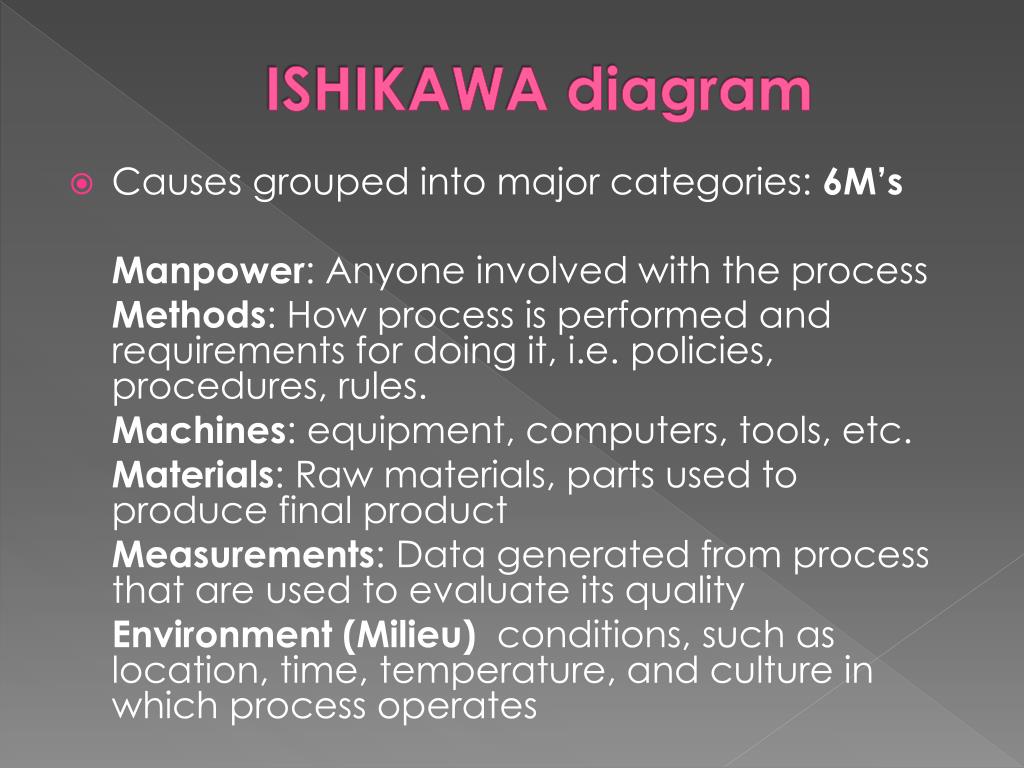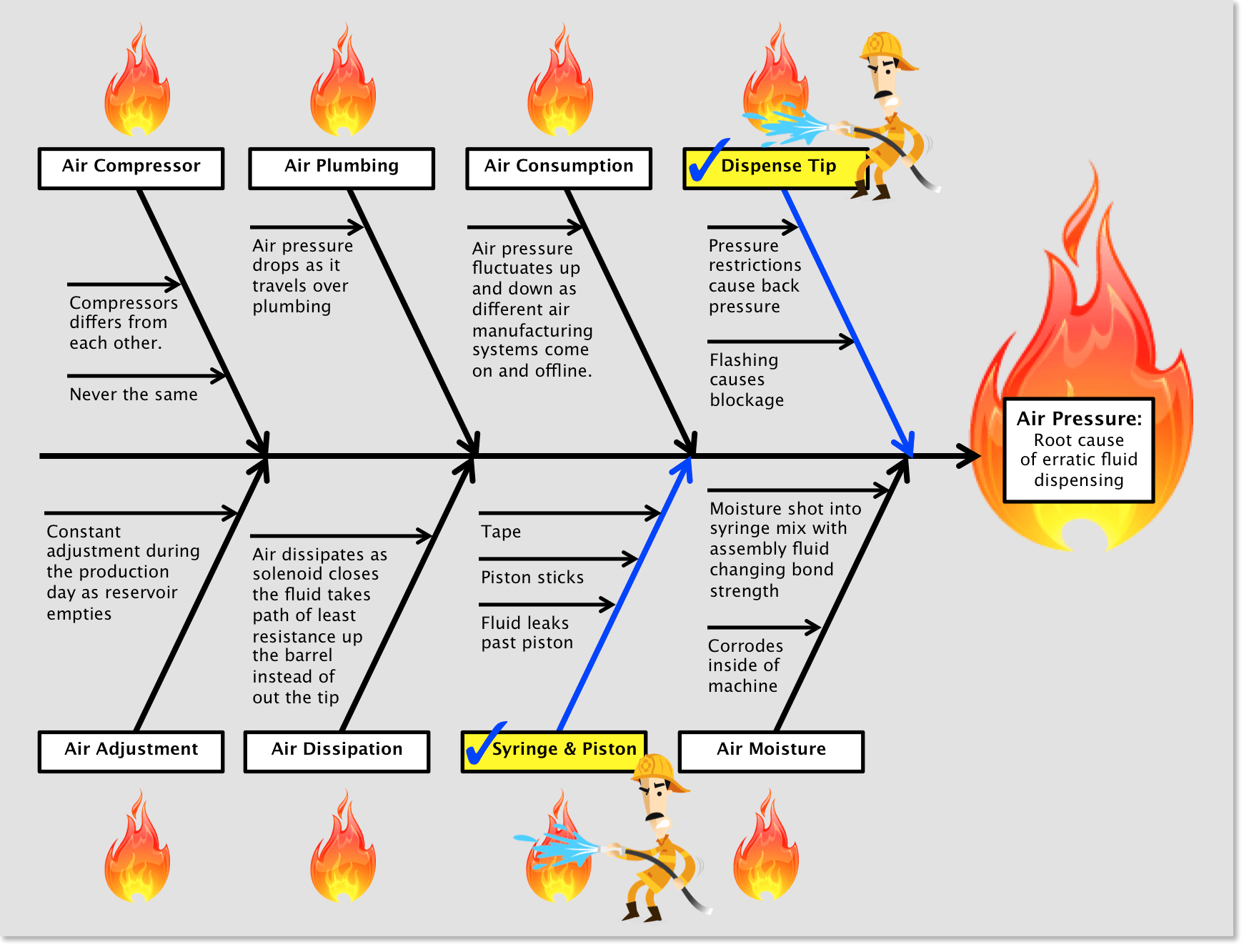


Make an action item list for all opportunities and follow-through.Do we need to revisit any causes or factors for reconsideration?.Do we need to collect data at certain processes?.Once the Fishbone is created, the team should decide: Review chart to ensure all known causes of variation are included.Continue to sub-divide all the causes for each branch until all causes are included. Decide on principle causes and show these as the major branches of the horizontal arrow. Brainstorm the causes that influence the effect – do this for all categories (branches).Agree on a problem statement (effect) and write it at the end of the horizontal arrow.Use it when the problem is complex and you are unsure of the most likely cause. Generally, there are 6 major branches (some header titles may be varied): This is a typical example of a Fishbone Diagram template. When problem-solving has gone stale and the team needs a fresh approach.When identifying possible causes for a problem.When a simple approach is needed to reduce the effect of a problem(s).The importance of the FBD is that it uses visual power to highlight the problems and the relationship between problems and their potential sources. A Fishbone Diagram is a “Cause and Effect” diagram.When the most probable causes have been identified, they are written in the box along with the original effect.ĭe:Ursache-Wirkungs-Diagramm es:Diagrama de Ishikawa fr:Diagramme de causes et effets pt:Diagrama de Ishikawa This page uses Creative Commons Licensed content from Wikipedia ( view authors). Off each of the large bones there may be smaller bones highlighting more specific aspects of a certain cause. These are drawn towards the left hand corners of the paper, and they are each labeled with the causes to be investigated. The main body of the diagram is a horizontal line from which stem the general causes, represented as "bones". Most Ishikawa diagrams have a box at the right hand side in which is written the effect that is to be examined. People sometimes call Ishikawa diagrams "fishbone diagrams" because of their fish-like appearance. Every factor identified in the diagram was included in the final design. The main causes included such aspects as "touch" and "braking" with the lesser causes including highly granular factors such as "50/50 weight distribution" and "able to rest elbow on top of driver's door". Mazda Motors famously used a Ishikawa diagram in the development of the Miata sports car, where the required result was "Jinba Ittai" or "Horse and Rider as One". It is also known as a cause and effect diagram.Ī common use of the Ishikawa diagram is in product design, to identify desirable factors leading to an overall effect. Because of its shape, an Ishikawa diagram can be known as a Fishbone Diagram. It was first used by Kaoru Ishikawa in the 1960s, and is considered one of the seven basic tools of quality management, including the histogram, Pareto chart, check sheet, control chart, cause and effect diagram, flowchart, and scatter diagram. An Ishikawa diagram, also known as a Fishbone diagram or cause and effect diagram, is a diagram that shows the causes of a certain event.


 0 kommentar(er)
0 kommentar(er)
